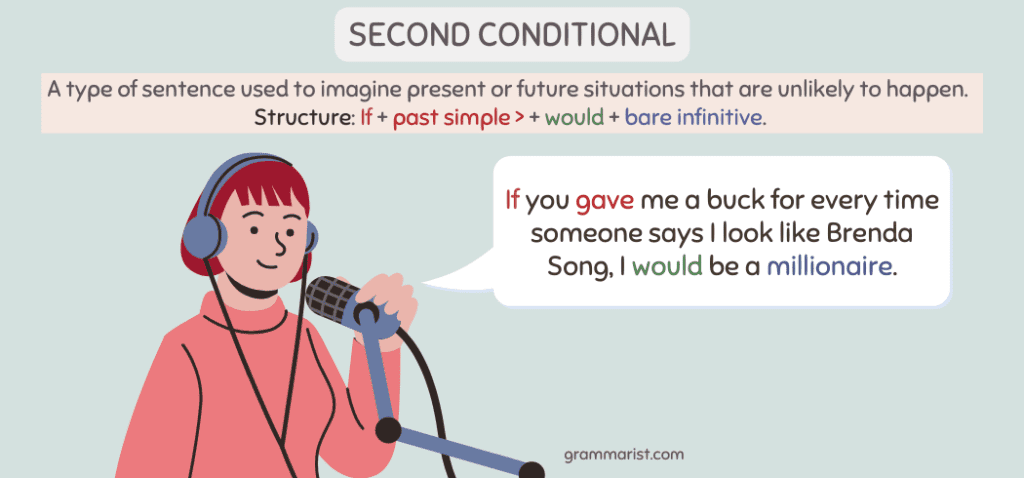There are three types of conditional sentences in the English language, and many think the second type is the most challenging. But I’m going to explain all there is to know.
Do you know how to use second conditionals? I’ll show the second conditional structure, functions, and definition. My guide also provides examples of sentences and a worksheet to test your understanding.
What is the Second Conditional?

Good question. I actually never knew the concept had a name until recently. I use it all the time when I’m writing but didn’t realize it was a specific part of language.
Conditionals indicate the result of a specific condition. They include the if clause, which discusses the condition, and the main clause, which shows the result.
The second conditional is a type of sentence used to imagine present or future situations that are unlikely to happen. It is like the first conditional because we are still imagining the future. The only difference lies in the possibility of the condition.
For example, you did not buy concert tickets to your favorite band. Is it possible to see them perform? It isn’t! But you could possibly buy a ticket in the future and see them live.
The Structure of a Second Conditional Sentence
Second conditional sentences follow the same structure of having a condition and result. But the second conditional form is usually:
- If + past simple > + would + bare infinitive.
Use the simple tense when discussing the condition. For the result, use the auxiliary verb would and the base form of the verb. For example:
- If you gave me a buck for every time someone says I look like Brenda Song, I would be a millionaire.
This sentence is an example of a second conditional. It is impossible to have a dollar every time someone says you look like someone.
If if is followed by a be verb, you should say if I were, if they were, if it were, etc. However, some people consider was accurate, especially with he and she. For example:
- If I were you, I would approach him right away.
Using the Second Conditional
Only use the second conditional when talking about unreal, impossible, or untrue events that won’t happen. You can use it to talk about things that may seem real but unlikely, too. For example:
- If I were Karen, I would buy that house and lot.
This sentence shows a second conditional because The speaker (I) is not Karen. The speaker can’t be Karen.
Here is another example of a second conditional sentence where the clauses are exchanged.
- Peter would be happy if Lillian were still alive.
This sentence implies that Lilian already died. Therefore, it’s impossible for her to be alive.
Never use the second conditional structure to talk about future situations we believe are possible. It’s also not recommended to use it when discussing generally true things.
Use Conditionals Correctly
Conditionals or if conditionals are English structures that include an if clause and the particular results. One of the most challenging types is the second conditional, which is used for future conditions that are impossible to happen. Remember:
- Use the simple past tense for the condition; then,
- Use would + base verb for the result.
Learn more about the other conditionals in the English language on our site!